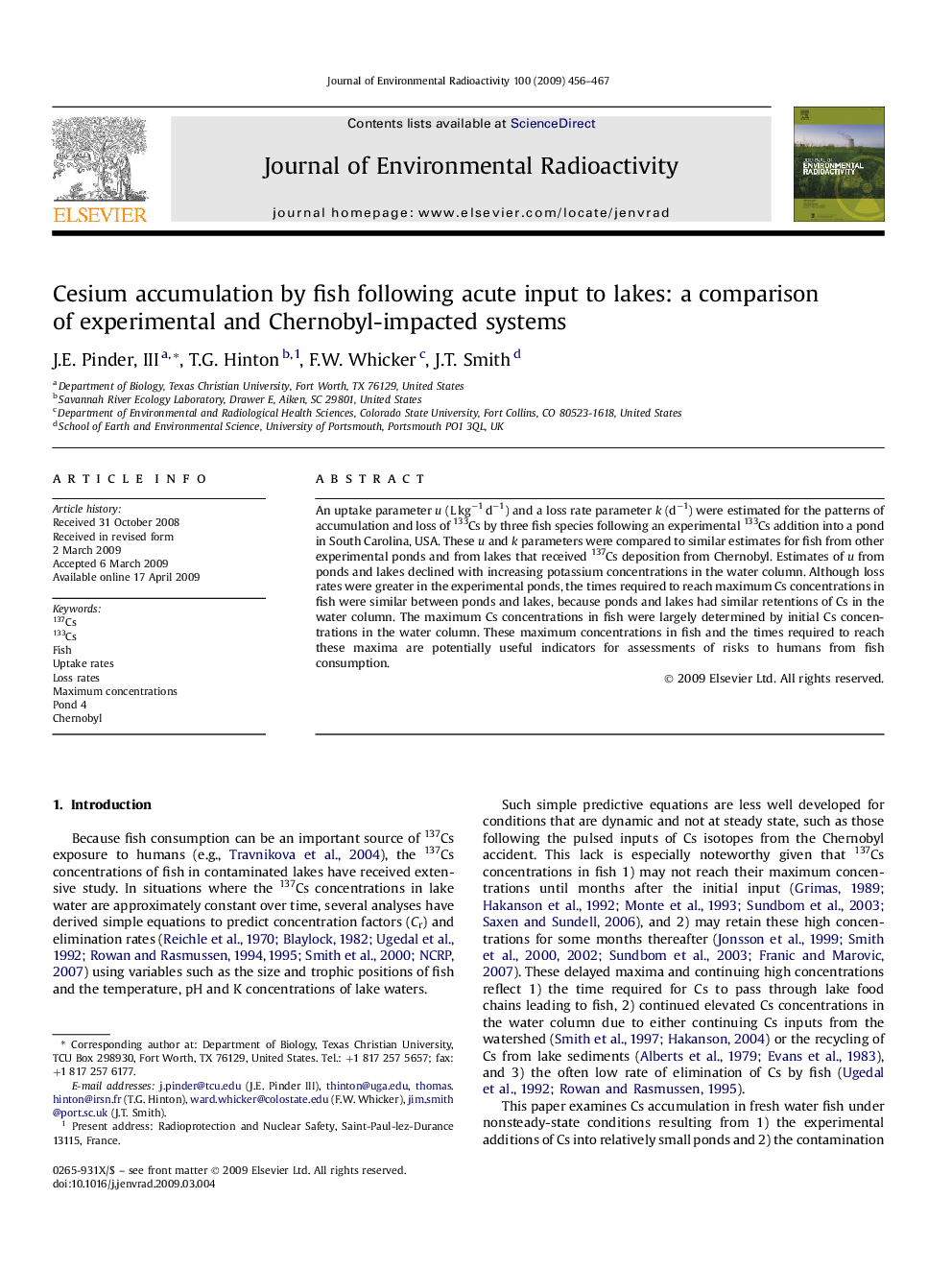| Article ID | Journal | Published Year | Pages | File Type |
|---|---|---|---|---|
| 1738963 | Journal of Environmental Radioactivity | 2009 | 12 Pages |
An uptake parameter u (L kg−1 d−1) and a loss rate parameter k (d−1) were estimated for the patterns of accumulation and loss of 133Cs by three fish species following an experimental 133Cs addition into a pond in South Carolina, USA. These u and k parameters were compared to similar estimates for fish from other experimental ponds and from lakes that received 137Cs deposition from Chernobyl. Estimates of u from ponds and lakes declined with increasing potassium concentrations in the water column. Although loss rates were greater in the experimental ponds, the times required to reach maximum Cs concentrations in fish were similar between ponds and lakes, because ponds and lakes had similar retentions of Cs in the water column. The maximum Cs concentrations in fish were largely determined by initial Cs concentrations in the water column. These maximum concentrations in fish and the times required to reach these maxima are potentially useful indicators for assessments of risks to humans from fish consumption.
